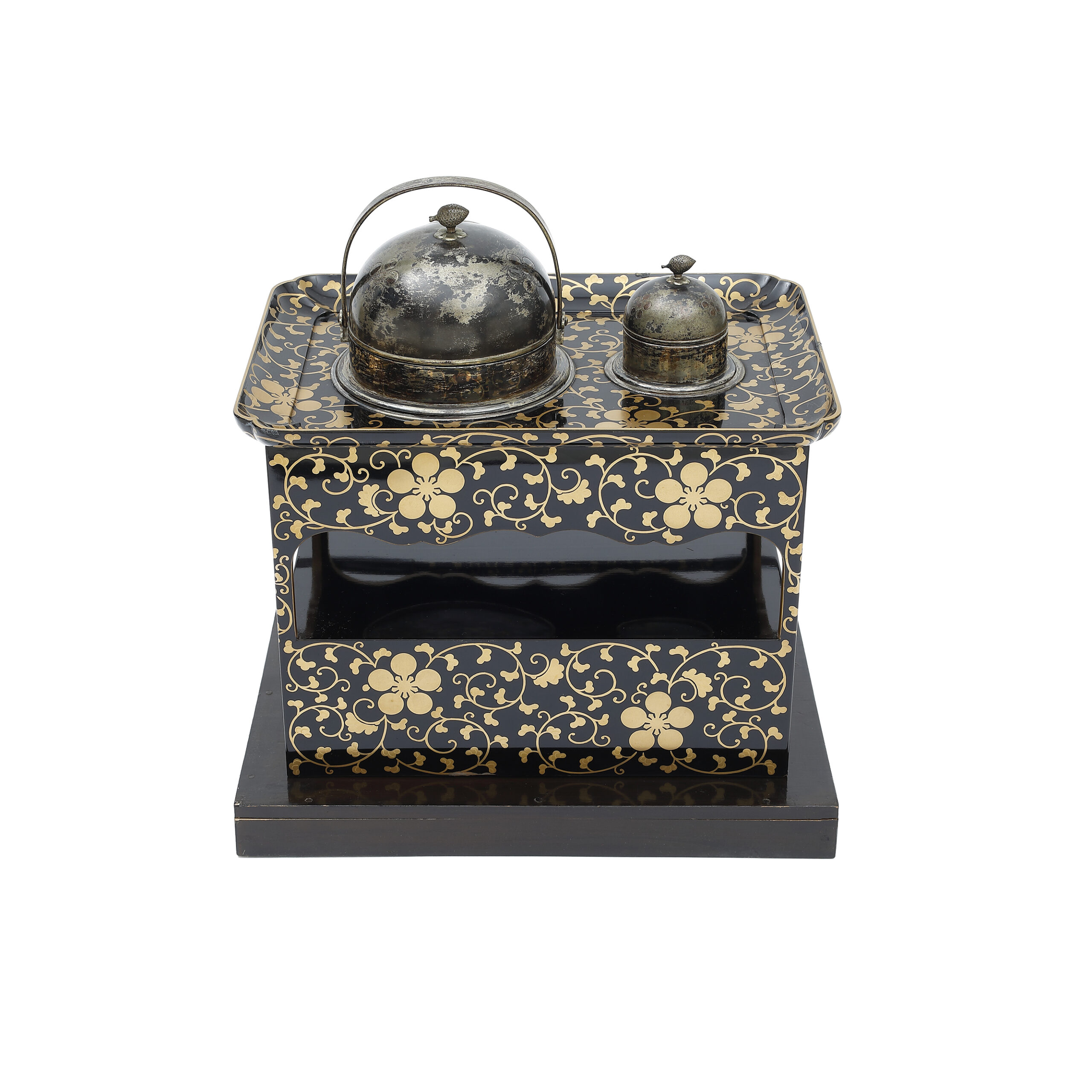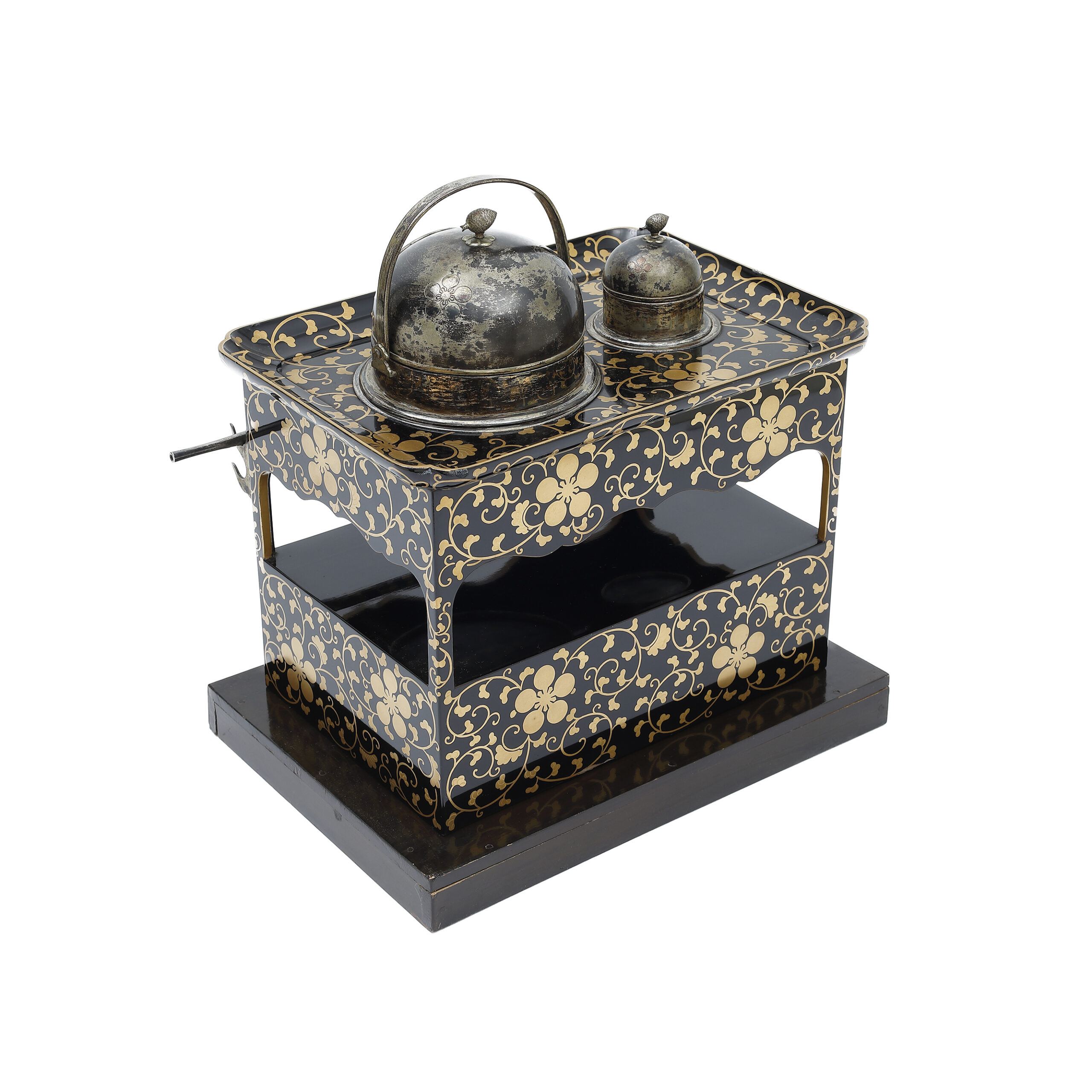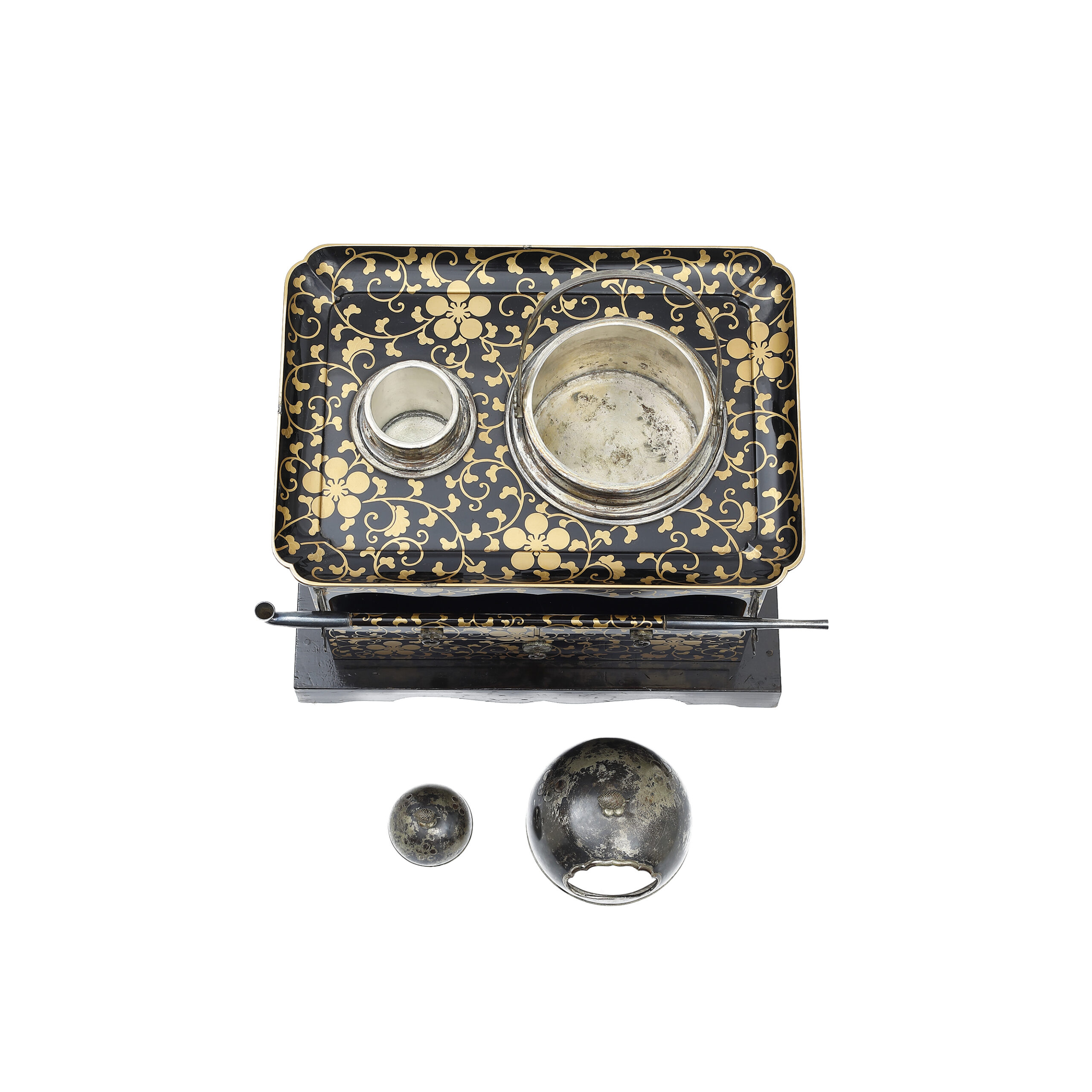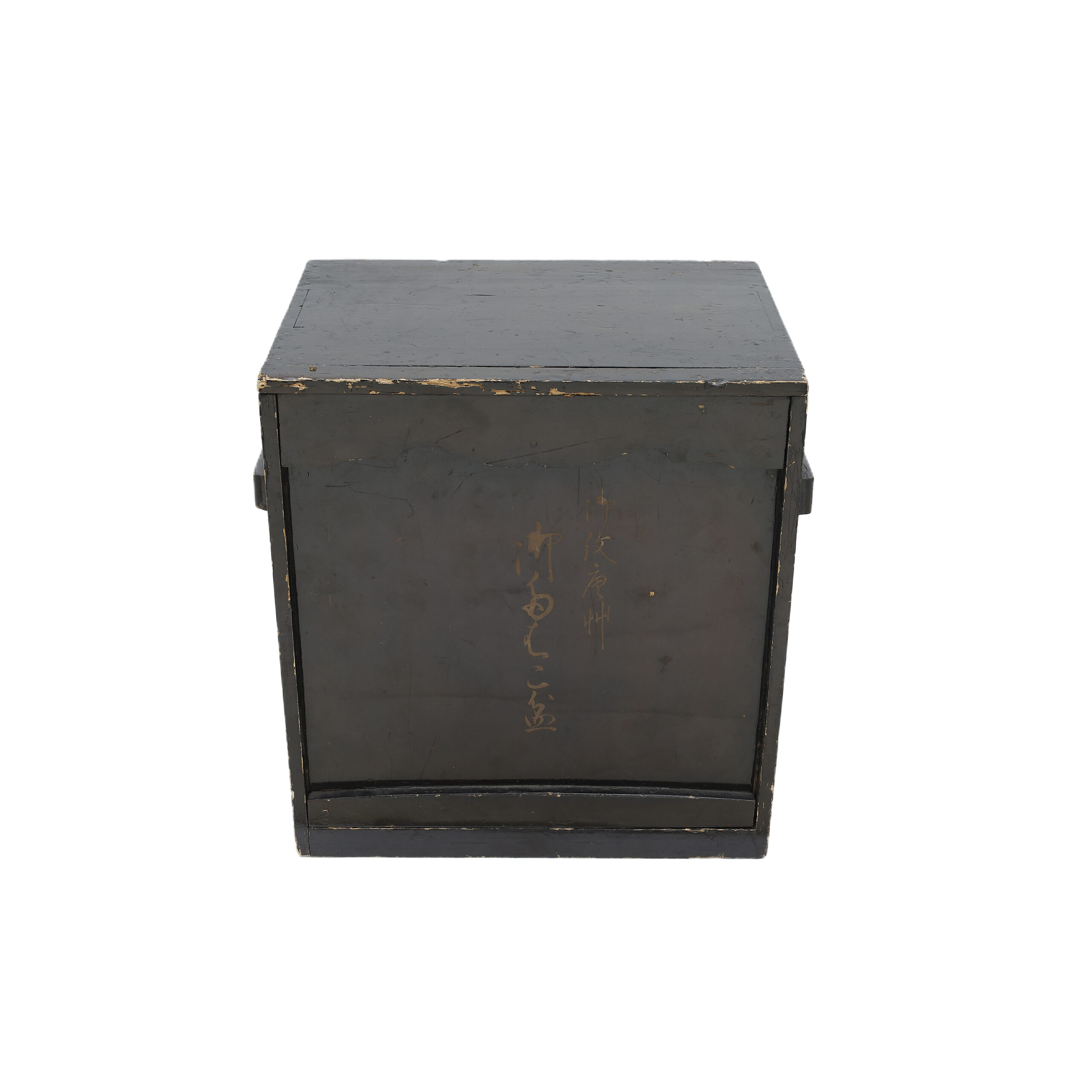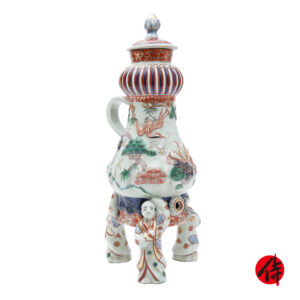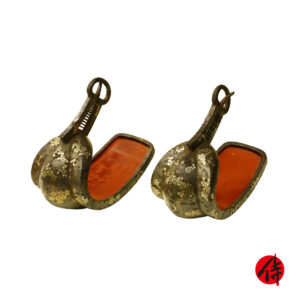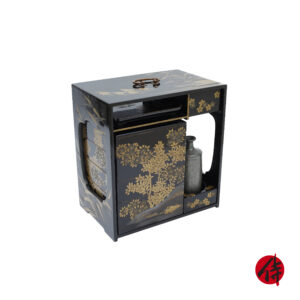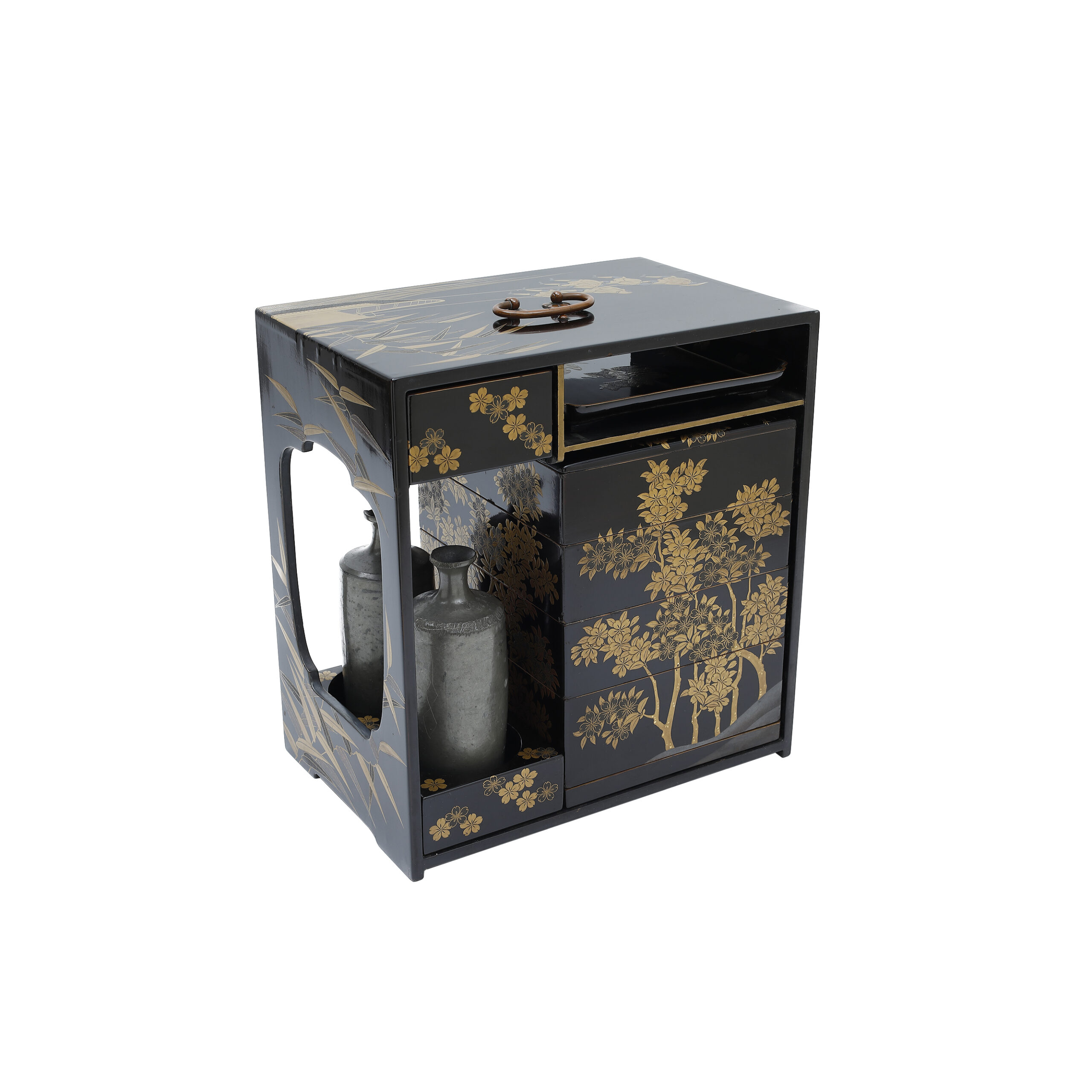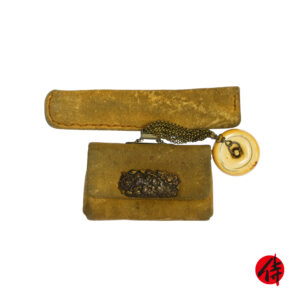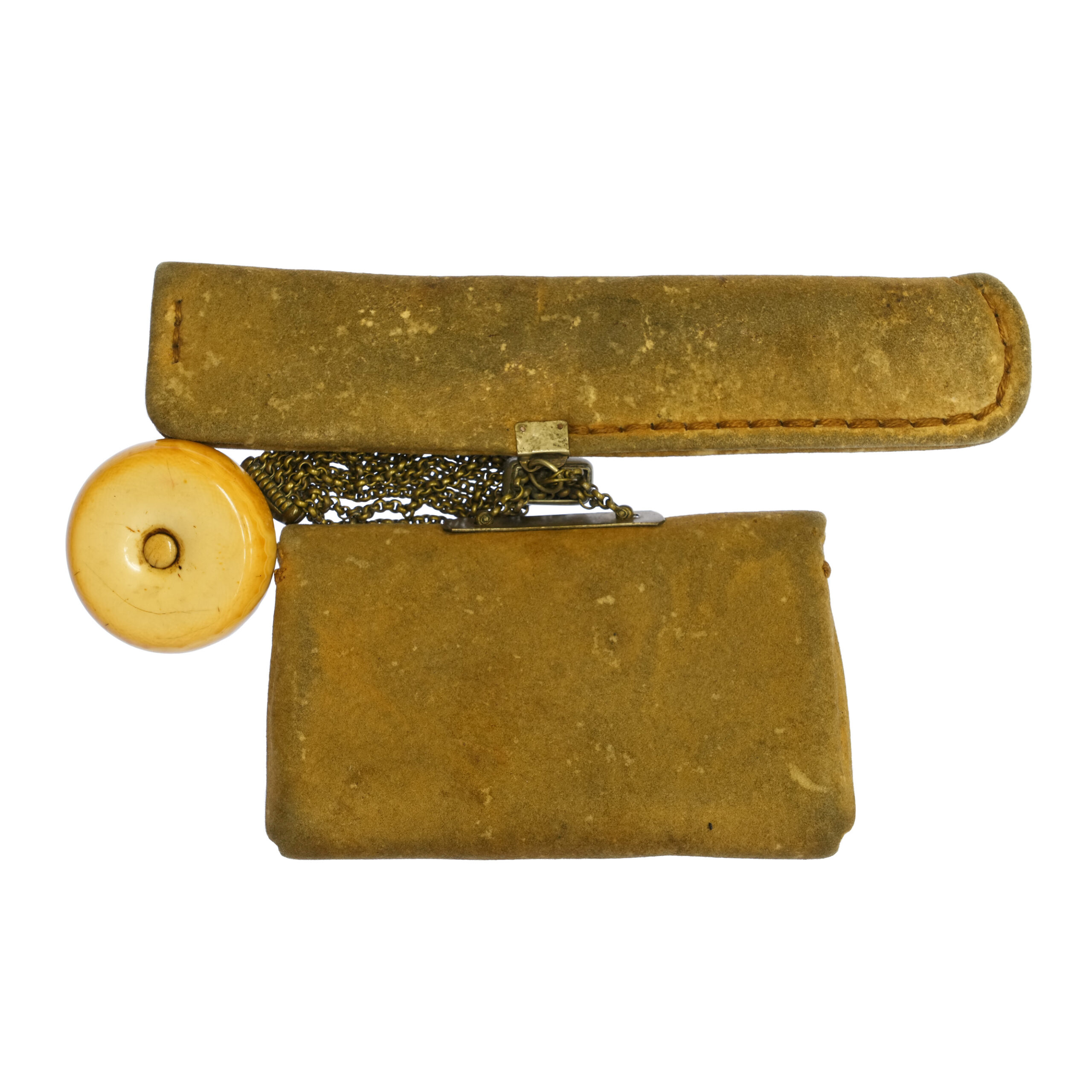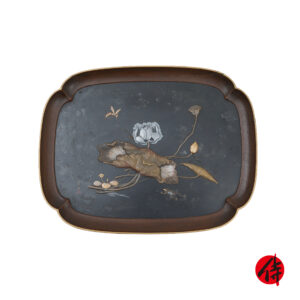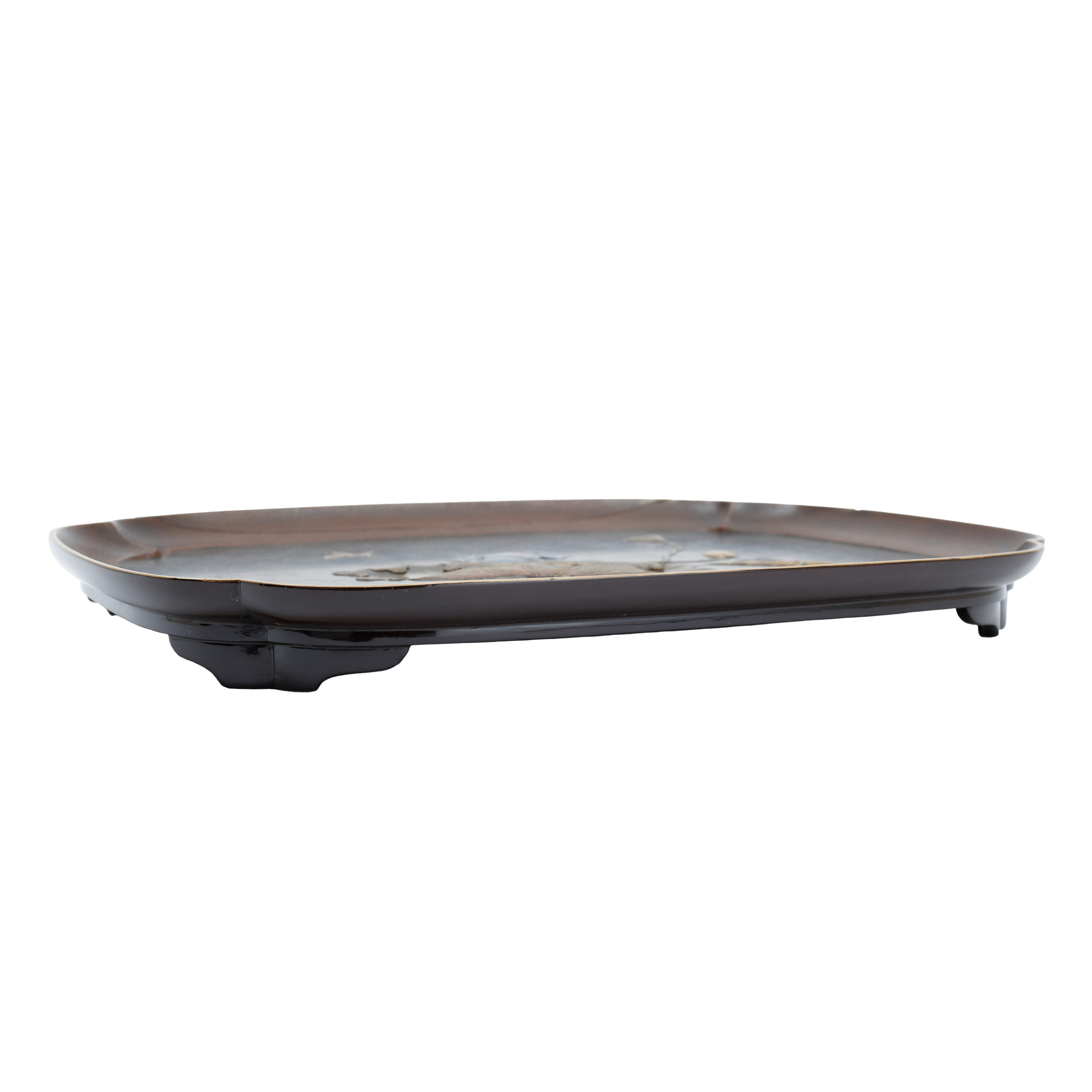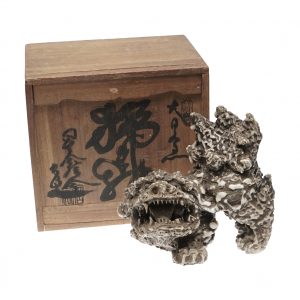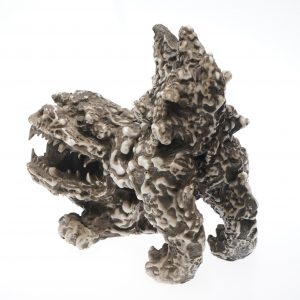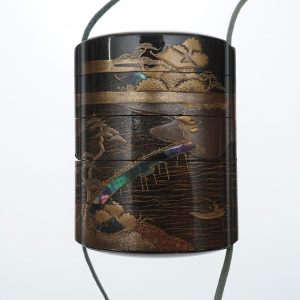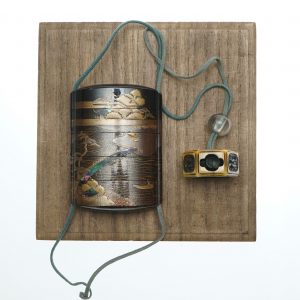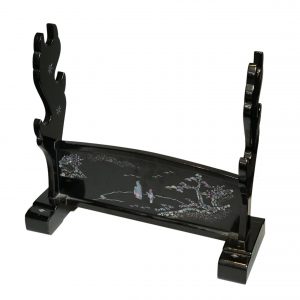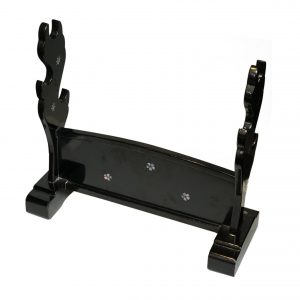Description
This item is a Tabaco Bon (たばこ盆/煙草盆). This is a tool that stores a set of tools used for smoking. This item did not yet exist when Sen-no Rikyu (千利休, 1522-1591) was active. He was a tea master from the Sengoku period to the Azuchi-Momoyama period. According to one theory, this utensil appeared in the Edo period. Sets of Tabaco Bon became common as utensils for tea ceremonies in the latter half of the Edo period. Japanese people had improved Tabaco Bons to make them more convenient for smoking chopped tobacco. They were made in various shapes and designs, from tray-shaped to box-shaped ones, and highly decorative items with lacquer work, like this work, also began to appear. The cigarette case we introduce here is a masterpiece that has been given a gorgeous appearance using the Makie (蒔絵) technique, which suggests that it was useful in a practical way but was also cherished as an interior decoration. The Makie is a typical Japanese lacquer art technique developed uniquely in Japan for about 1,200 years. Firstly, it needs to draw a picture with lacquer on the surface with a thin brush. Next, sprinkle the gold powder from above to show the pattern before the lacquer hardens. This technique makes a gorgeous and elegant look to works.
The Umebachi Karakusa (梅鉢唐草) pattern decorates this Tabaco Bon. It is a combination of Umebachi Mon (梅鉢紋) and Karakusa Monyou(唐草模様, arabesque pattern). The Umebachi Mon is derived from the Ume (梅, Japanese apricot blossom) pattern. The Ume pattern profoundly relates to the Tenjin (天神) faith. This belief honors the soul of Sugawara no Michizane (菅原道真, 845-903), and he cherished this flower. Michizane excelled in academics and was appointed and promoted by the emperor back then. However, other aristocrats envied his promotions, and Michizane was demoted to the Kyushu (九州) region, far from the capital. And he passed away two years later. After his death, the capital suffered great natural disasters. And people who opposed Michizane had unfortunate experiences. People thought that his spirit caused these things, and the capital was terrified at that time. One day, when such a situation continued, Michizane possessed a person and demanded to enshrine himself. The imperial court accepted his request and built a shrine in Kyushu to appease his spirit. This was managed by the Sugawara family, a family of scholars. And Michizane, who excelled in studies during his lifetime, came to be worshiped as the god of learning. Because of this background, it is said that many family crests with the Ume designs were used in the Kinki and Kita-Kyushu regions.
The Karakusa pattern is a design in which vine stems and leaves are twined and make curves. Since ivy has a strong vitality and grows without interruption, people regarded this design as a symbol of prosperity and longevity. Vine is called the Tsuru (蔓) in Japanese, and it has another pronunciation; “Man.” There is a word 万 (it is also read Man), which means ten thousand. In the Karakusa pattern, leaves and vines are connected like an Obi (帯, belt). The word “帯” can also be read “Tai.” Due to its pronunciation, the term “代 (Tai)” is associated. From this word-association game, an idiom 万代 is associated, and it means a thousand generations. In other words, we could imagine that people used this design wishing prosperity and longevity for their clans for a long time. In this way, this Tabaco Bon’s design is composed of auspicious motifs. We hope you enjoyed this description and gained an even greater appreciation for the charm of this work.
*As this item is an antique, please check each photo and ensure its condition.


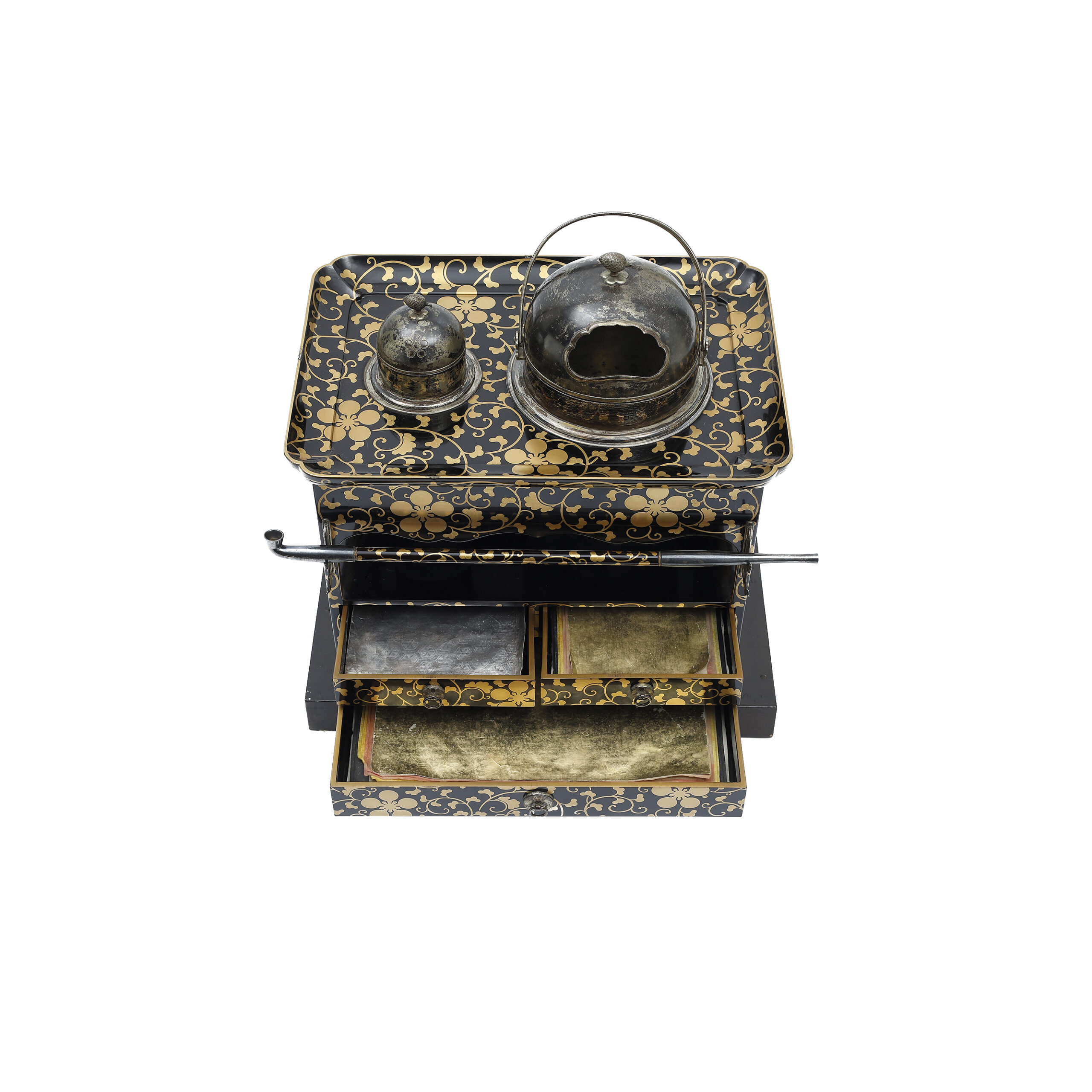
【About us】
Samurai Museum is located in Tokyo, Japan, exhibiting antique artifacts related to the Samurai history. Samurai Museum Shop is the place for those who are interested in Japanese culture and craftsmanship. We deal with antique Samurai swords/armor, traditional crafts made in Japan and so on.
【Payment method】
We accept payment through Stripe (Credit card), PayPal, Apple Pay or ChromePay, all of which are secure payment methods. Also, you don’t need to make an account on Stripe for the checkout. If you prefer other payment method, please contact us. You may either pay in JPY, USD, AUD, CAD, EUR, CHF or GBP. The price is set in Japanese Yen. Prices in other currencies are automatically calculated based on the latest exchange rate.

【Shipping duration】
We normally ship via EMS (Express Mail Service) provided by Japan Post. It usually takes at least 5-14 days to deliver the package after you place an order.
We offer Free International Shipping as long as we can ship your order by EMS. If you prefer other shipping carriers, please contact us.
We will inform you of the order’s tracking number via email. Please make sure you fill out your valid email address correctly.
*If you like to make sure if EMS shipping is available to your country, please contact us.

【How to make sure the condition】
Please keep in mind that what you are going to purchase is an antique item. We uploaded high resolution photos for you to check its condition thoroughly. If you like to see more photos with different angles, please feel free to contact us. We will be happy to send them to you so that you can make informed decision.
It is essential for us to know that you are happy with your choice of antique item and we are prepared to use the best of our ability to serve you.
Would you like see some more antique items for sale? Please check the link below. We hope you can find your favorite Tsuba.
https://www.samuraimuseum.jp/shop/product-category/antique/
